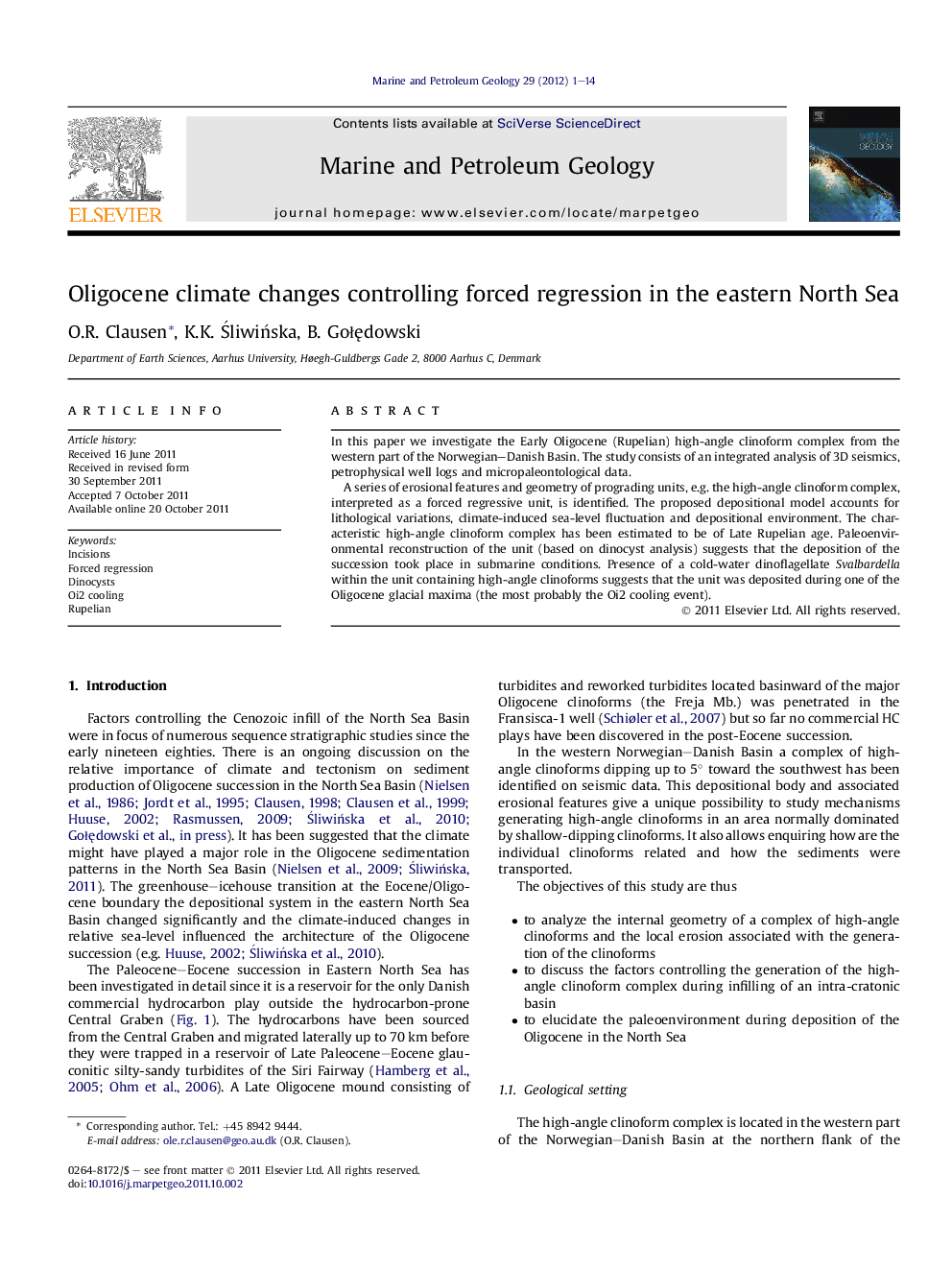| Article ID | Journal | Published Year | Pages | File Type |
|---|---|---|---|---|
| 4696044 | Marine and Petroleum Geology | 2012 | 14 Pages |
In this paper we investigate the Early Oligocene (Rupelian) high-angle clinoform complex from the western part of the Norwegian–Danish Basin. The study consists of an integrated analysis of 3D seismics, petrophysical well logs and micropaleontological data.A series of erosional features and geometry of prograding units, e.g. the high-angle clinoform complex, interpreted as a forced regressive unit, is identified. The proposed depositional model accounts for lithological variations, climate-induced sea-level fluctuation and depositional environment. The characteristic high-angle clinoform complex has been estimated to be of Late Rupelian age. Paleoenvironmental reconstruction of the unit (based on dinocyst analysis) suggests that the deposition of the succession took place in submarine conditions. Presence of a cold-water dinoflagellate Svalbardella within the unit containing high-angle clinoforms suggests that the unit was deposited during one of the Oligocene glacial maxima (the most probably the Oi2 cooling event).
Graphical abstractFigure optionsDownload full-size imageDownload as PowerPoint slideHighlights► A forced regressive wedge in the eastern North Sea bounded by incised surfaces. ► Cooling, which forced the sea-level fall, is related to the Oi2 isotope event. ► Oligocene paleoenvironment in the North Sea. ► Integration of 3D seismic, well log and biostratigraphic analysis.
